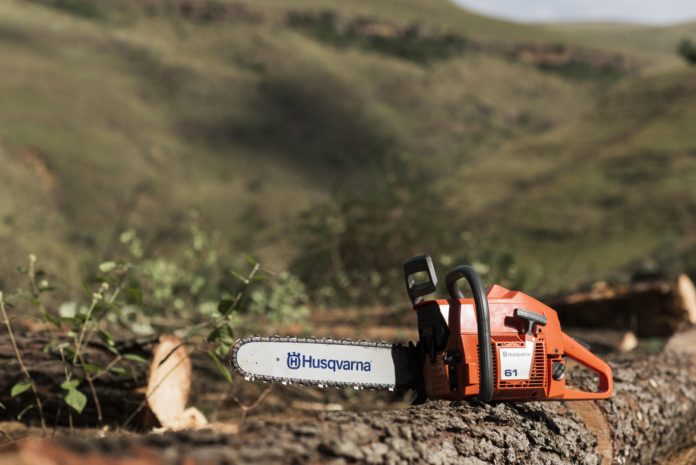Top 6 safety tips you need to know before using a chainsaw
Chainsaw-related deaths are rare, but they do happen. Injuries, however, are a little more frequent and that’s why Mark Odell, Product Manager from Husqvarna South Africa, says that whether you are a seasoned, professional saw operator or an occasional user, your chainsaw deserves your respect.
He says that when used correctly, chainsaws are incredible tools that save time, effort and labour costs, particularly for landowners and forestry professionals. “However, whilst Husqvarna has world-class safety features on all their chainsaws, it is important to remember that most chainsaw accidents are as a result of being hit by the felled tree or a branch, so operator safety training is as important as safe equipment. Operators must be fully educated on chainsaw safety before they even pick up the tool,” he adds.
Mark offers 6 safety tips that every operator needs to know:
1. Avoid kickbacks by never using the kickback zone of the saw:
A kickback happens when the chain catches something solid and flicks the machine upwards, towards the operator, often resulting in nasty wounds to the face, neck or upper torso. The risk of kickback is simply too high when using the upper oart of the nose of the guide bar, so it’s critical that you avoid using this part of the saw and only use the pulling zone of the chain (i.e.: the underneath part of the saw).
2. Make sure all safety features are working:
To achieve a safe working situation a modern chainsaw must be fitted with the following of safety features: kickback guard and chain brake, throttle back, chain catcher, right-hand guard and an accessible stop control. Remember to regularly inspect these features and always make sure you have a sharp and properly filed chain. Husqvarna chainsaws have an additional safety feature in the form of the TrioBrake™ which is triggered if the hand holding the back handle touches a second guard.
3. Guard against chain breaks:
If a chain is going to break, it’ll probably be whilst it is working. You need to make sure that the guard underneath the chainsaw, protecting your hand on the back handle, as well as the chain catcher, are both firmly in place. It is similarly placed underneath the chainsaw, as the chain goes into the sprocket.
4. Adopt the correct grip and stance:
Sheer exhaustion or sometimes even the anticipation of the end of a shift can tempt operators into compromising their hold on the chainsaw and/or neglecting their posture. Most safety features rely on the correct handling of the machine so there can be no concession when it comes to firmly gripping the chainsaw with both hands, and wrapping thumbs and fingers around either side of the handles. Knees rather than backs should be bent and the machine held close to the body rather than with outstretched arms. And never use the machine above shoulder height.
5. Be extra careful with the small stuff:
Most accidents happen when operators are clearing a path to the tree to be felled or when they are cutting branches off. In these situations, kickbacks are far more likely as the chain can inadvertently connect with branches and sticks that are not in the operator’s line of vision.
6. Wear the right clothing:
One of the most important lines of defence for chainsaw operators is personal protective equipment (PPE). Head to toe protection is critical so head protection, eye protection, hearing protection, gloves, chainsaw chaps or pants and safety shoes are non-negotiable. The right hearing protection is your top priority and while it should be sufficient to reduce the noise of the saw to acceptable levels, make sure you can still hear other people, trees cracking and other warning signals as this could save your life.
“Chainsaws are undeniably one of the best industrial inventions and are indispensable in several businesses and homes. We aim to equip Husqvarna customers with the best tools in terms of both efficacy and safety, so please contact your nearest agent who will happily assist by not only providing you with fit-for-purpose equipment but training too,” concludes Mark.
For more information, go to: www.husqvarna.com/za












